Golden Horde
Golden Horde
Jump to navigation
Jump to search
| Golden Horde Ulus of Jochi[a] | |||||
| Зүчийн улс | |||||
| |||||
| |||||
|
Flag of the Golden Horde, as shown in the Catalan Atlas (other sources illustrate that the Golden Horde was known for the yellow color of the khan's flag and trappings[2]).
| |||||
| Capital | Sarai Batu | ||||
| Languages | |||||
| Religion |
| ||||
| Government | Semi-elective monarchy, later hereditary monarchy | ||||
| Khan | |||||
| • | 1226–1280 | Orda Khan (White Horde) | |||
| • | 1242–1255 | Batu Khan (Blue Horde) | |||
| • | 1379–1395 | Tokhtamysh | |||
| • | 1435–1459 | Küchük Muhammad (Great Horde) | |||
| • | 1481–1498, 1499–1502 | Shaykh Ahmad | |||
| Legislature | Kurultai | ||||
| Historical era | Late Middle Ages | ||||
| • | Established after the Mongol invasion of Rus' | 1240s | |||
| • | Blue Horde and White Horde united | 1379 | |||
| • | Disintegrated into Great Horde | 1466 | |||
| • | Last remnant subjugated by the Crimean Khanate | 1502 | |||
| Area | |||||
| • | 1310[3][4] | 6,000,000 km2 (2,300,000 sq mi) | |||
| Currency | Pul, Som, Dirham[5] | ||||
| Today part of | |||||
|
After the death of Batu Khan (the founder of the Golden Horde) in 1255, his dynasty flourished for a full century, until 1359, though the intrigues of Nogai did instigate a partial civil war in the late 1290s. The Horde's military power peaked during the reign of Uzbeg (1312–1341), who adopted Islam. The territory of the Golden Horde at its peak included most of Eastern Europe from the Urals to the Danube River, and extended east deep into Siberia. In the south, the Golden Horde's lands bordered on the Black Sea, the Caucasus Mountains, and the territories of the Mongol dynasty known as the Ilkhanate.[7]
The khanate experienced violent internal political disorder beginning in 1359, before it briefly reunited (1381–1395) under Tokhtamysh. However, soon after the 1396 invasion of Timur, the founder of the Timurid Empire, the Golden Horde broke into smaller Tatar khanates which declined steadily in power. At the start of the 15th century, the Horde began to fall apart. By 1466, it was being referred to simply as the "Great Horde". Within its territories there emerged numerous predominantly Turkic-speaking khanates. These internal struggles allowed the northern vassal state of Muscovy to rid itself of the "Tatar Yoke" at the Great stand on the Ugra river in 1480. The Crimean Khanate and the Kazakh Khanate, the last remnants of the Golden Horde, survived until 1783 and 1847 respectively.
Contents
Name
The name Golden Horde is said to have been inspired by the golden color of the tents the Mongols lived in during wartime, or an actual golden tent used by Batu Khan or by Uzbek Khan,[8] or to have been bestowed by the Slavic tributaries to describe the great wealth of the khan. But the Mongolic word for the color yellow (Sarı/Saru) also meant "center" or "central" in Old Turkic and Mongolic languages, and "horde" probably comes from the Mongolic word ordu, meaning palace, camp or headquarters, so "Golden Horde" may simply have come from a Mongolic term for "central camp".[9] In any event, it was not until the 16th century that Russian chroniclers begin explicitly using the term "Golden Horde" (Russian: Золотая Орда) to refer to this particular successor khanate of the Mongol Empire. The first known use of the term, in 1565, in the Russian chronicle History of Kazan, applied it to the Ulus of Batu (Russian: Улуса Батыя), centered on Sarai.[10][11] In contemporary Persian, Armenian and Muslim writings, and in the records of the thirteenth and early fourteenth centuries such as the Yuanshi and the Jami' al-tawarikh, the khanate was called the "Ulus of Jochi" ("realm of Jochi" in Mongolian), "Dasht-i-Qifchaq" (Qipchaq Steppe) or "Khanate of the Qipchaq" and "Comania" (Cumania).[12][13]The eastern or left wing (or "left hand" in official Mongolian-sponsored Persian sources) was referred to as the Blue Horde in Russian chronicles and as the White Horde in Timurid sources (e.g. Zafar-Nameh). Western scholars have tended to follow the Timurid sources' nomenclature and call the left wing the White Horde. But Ötemish Hajji (fl. 1550), a historian of Khwarezm, called the left wing the Blue Horde, and since he was familiar with the oral traditions of the khanate empire, it seems likely that the Russian chroniclers were correct, and that the khanate itself called its left wing the Blue Horde.[14] The khanate apparently used the term White Horde to refer to its right wing, which was situated in Batu's home base in Sarai and controlled the ulus. However, the designations Golden Horde, Blue Horde, and White Horde have not been encountered in the sources of the Mongol period.[15]
Mongol origins (1225–1241)
At his death in 1227, Genghis Khan divided the Mongol Empire amongst his four sons as appanages, but the Empire remained united under the supreme khan. Jochi was the eldest, but he died six months before Genghis. The westernmost lands occupied by the Mongols, which included what is today southern Russia and Kazakhstan, were given to Jochi's eldest sons, Batu Khan, who eventually became the ruler of the Blue Horde, and Orda Khan, who became the leader of the White Horde.[16][17] In 1235, Batu with the great general Subedei began an invasion westwards, first conquering the Bashkirs and then moving on to Volga Bulgaria in 1236. From there he conquered some of the southern steppes of present-day Ukraine in 1237, forcing many of the local Cumans to retreat westward. The military campaign against the Kypchaks and Cumans had started under Jochi and Subedei in 1216–1218 when the Merkits took shelter among them. By 1239 a large portion of Cumans were driven out of the Crimea peninsula, and it became one of the appanages of the Mongol Empire.[18] The remnants of the Crimean Cumans survived in the Crimean mountains, and they would, in time, mix with other groups in the Crimea (including Greeks, Goths, and Mongols) to form the Crimean Tatar population. Moving north, Batu began the Mongol invasion of Rus' and for three years subjugated the principalities of former Kievan Rus', whilst his cousins Möngke, Kadan, and Güyük moved southwards into Alania.
Decisive Golden Horde victory in the Battle of Mohi
While the Mongolian language was undoubtedly in general use at the court of Batu, few Mongol texts written in the territory of the Golden Horde have survived, perhaps because of the prevalent general illiteracy. According to Grigor'ev, yarliq, or decrees of the Khans, were written in Mongol, then translated into the Cuman language. The existence of Arabic-Mongol and Persian-Mongol dictionaries dating from the middle of the 14th century and prepared for the use of the Egyptian Mamluk Sultanate suggests that there was a practical need for such works in the chancelleries handling correspondence with the Golden Horde. It is thus reasonable to conclude that letters received by the Mamluks – if not also written by them – must have been in Mongol.[19] Indeed, the linguistic and even socio-linguistic impacts were great, as the Russians borrowed thousands of words, phrases, and other significant linguistic features from the Mongol and Turkic languages that were united under the Mongol Empire.[20]
Golden Age
Early rulers under the Great Khans (1241–1259)
When the Great Khatun Töregene invited Batu to elect the next Emperor of the Mongol Empire in 1242, he declined to attend a kurultai, thus delaying the succession for several years. Although Batu stated he was suffering from old age and illness and politely refused the invitation, it seems that he did not support the election of Güyük Khan because Güyük and Büri, grandson of Chagatai Khan, had quarreled violently with Batu at a victory banquet during the Mongol occupation of Eastern Europe. Finally, he sent his brothers to the kurultai, and the new Emperor of the Mongols was elected in 1246. All the senior Rus' princes, including Yaroslav II of Vladimir, Danylo of Halych, and Sviatoslav Vsevolodovich of Vladimir, acknowledged Batu's supremacy. However, the Mongol court exterminated some anti-Mongol princes, such as Michael of Chernigov, who had killed a Mongol envoy in 1240.
Batu Khan establishes the Golden Horde.
Güyük died on the way, in what is now Xinjiang, at about the age of forty-two. Although some modern historians believe that he died of natural causes because of deteriorating health,[22] he may have succumbed to the combined effects of alcoholism and gout, or he may have been poisoned. William of Rubruck and a Muslim chronicler state that Batu killed the imperial envoy, and one of his brothers murdered the Great Khan Güyük, but these claims are not completely corroborated by other major sources. Güyük's widow Oghul Qaimish took over as regent, but she would be unable to keep the succession within her branch of the family.
14th-century Chinese drawing of young Batu Khan
Batu allowed Möngke's census takers to operate freely in his realm, though his prestige as kingmaker and elder Borjigin was at its height. In 1252–1259, Möngke conducted a census of the Mongol Empire, including Iran, Afghanistan, Georgia, Armenia, Russia, Central Asia, and North China. While the census in China was completed in 1252, Novgorod in the far northwest was not counted until winter 1258–59. There was an uprising in Novgorod against the Mongol census, but Alexander Nevsky forced the city to submit to the census and taxation.
The Grand Prince Andrey II gave umbrage to the Mongols. Batu sent a punitive expedition under Nevruy. On their approach, Andrey fled to Pskov, and thence to Sweden. The Mongols overran Vladimir and harshly punished the principality. The Livonian Knights stopped their advance to Novgorod and Pskov. Thanks to his friendship with Sartaq, Alexander was installed as the Grand Prince of Vladimir (i.e., the supreme Russian ruler) by Batu in 1252. In 1256 Andrey traveled to Sarai to ask pardon for his former infidelity and was shown mercy.
Jochi Mausoleum, Karagandy Region
After Batu died in 1256, his son Sartaq was appointed by Möngke. As soon as he returned from the court of the Great Khan in Mongolia, Sartaq died. After a brief reign of an infant Ulaghchi under the regency of Boragchin Khatun, Batu's younger brother Berke was enthroned as khan of the Jochids in 1257.
In 1257, Danylo repelled Mongol assaults led by the prince Kuremsa on Ponyzia and Volhynia and dispatched an expedition with the aim of taking Kiev. Despite initial successes, in 1259 a Mongol force under Boroldai entered Galicia and Volhynia and offered an ultimatum: Danylo was to destroy his fortifications or Boroldai would assault the towns. Danylo complied and pulled down the city walls. In 1259 Berke launched savage attacks on Lithuania and Poland, and demanded the submission of Béla IV, the Hungarian monarch, and the French King Louis IX in 1259 and 1260.[23] His assault on Prussia in 1259/60 inflicted heavy losses on the Teutonic Order.[24] The Lithuanians were probably tributary in the 1260s, when reports reached the Curia that they were in league with the Mongols.[25]
Civil war of the Mongols (1260–1280)
After Möngke Khan died in 1259, the Toluid Civil War broke out between Kublai Khan and Ariq Böke. While Hulagu supported Kublai, Berke threw his allegiance to Ariq Böke.[26] He also minted coins in Ariq Böke's name.[27] However, Berke remained neutral militarily, and after the defeat of Ariq Böke, freely acceded to Kublai's enthronement.[28] However, some elites of the White Horde joined Ariq Böke's resistance.One of the Jochid princes who joined Hulagu's army was accused of witchcraft and sorcery against Hulagu. After receiving permission from Berke, Hulagu executed him. After that two more Jochid princes died suspiciously. According to some Muslim sources, Hulagu refused to share his war booty with Berke in accordance with Genghis Khan's wish. Berke was a devoted Muslim who had had a close relationship with the Abbasid Caliph Al-Musta'sim, who had been killed by Hulagu in 1258. The Jochids believed that Hulagu's state eliminated their presence in the Transcaucasus.[29] Those events increased the anger of Berke and the war between the Golden Horde and the Ilkhanate soon broke out in 1262.
In 1262 a rebellion erupted in Suzdal, killing Mongol darughachis and tax-collectors. Berke planned a severe punitive expedition. But after Alexander Nevsky begged Berke not to punish the Russian people and the Vladimir-Suzdal cities agreed to pay a large indemnity, Berke relented.
The increasing tension between Berke and Hulagu was a warning to the Golden Horde contingents in Hulagu's army that they had better escape. One section reached the Kipchak Steppe, another traversed Khorasan and a third body took refuge in Mamluk ruled Syria where they were well received by Sultan Baybars (1260–1277). Hulagu harshly punished the rest of the Golden Horde army in Iran. Berke sought a joint attack with Baybars and forged an alliance with the Mamluks against Hulagu. The Golden Horde dispatched Nogai to invade the Ilkhanate but Hulagu forced him back in 1262. The Ilkhanids then crossed the Terek River, capturing an empty Jochid encampment, only to be routed in a surprise attack by Nogai's forces. Many of them were drowned as the ice broke on the frozen Terek River.
The Golden Horde army defeats the Ilkhanate at the battle of Terek in 1262. Many of Hulagu's men drowned in the Terek River while withdrawing.
Ariq Böke had earlier placed Chagatai's grandson Alghu as Chagatayid Khan, ruling Central Asia. He took control of Samarkand and Bukhara. When the Muslim elites and the Jochid retainers in Bukhara declared their loyalty to Berke, Alghu smashed the Golden Horde appanages in Khorazm. Alghu insisted Hulagu attack the Golden Horde; he accused Berke of purging his family in 1252. In Bukhara, he and Hulagu slaughtered all the retainers of the Golden Horde and reduced their families into slavery, sparing only the Great Khan Kublai's men.[30] After Berke gave his allegiance to Kublai, Alghu declared war on Berke, seizing Otrar and Khorazm. While the left bank of Khorazm would eventually be retaken, Berke had lost control over Transoxiana. In 1264 Berke marched past Tiflis to fight against Hulagu's successor Abagha, but he died en route.
Batu's grandson Mengu-Timur was nominated by Kublai and succeeded his uncle Berke.[31] However, Mengu-Timur secretly supported the Ögedeid prince Kaidu against Kublai and the Ilkhanate. After the defeat of Baraq (Chagatai Khan), a peace treaty was made among Mengu-Timur, Kaidu and him in c. 1267. One-third of Transoxiana was granted to Kaidu and Mengu-Timur according to this peace treaty.[32] In 1268, when a group of princes operating in Central Asia on Kublai's behalf mutinied and arrested two sons of the Qaghan (Great Khan), they sent them to Mengu-Timur. One of them, Nomoghan, favorite of Kublai, was located in the Crimea.[33] Mengu-Timur might have struggled with Hulagu's successor Abagha for a brief period of time, but the Great Khan Kublai forced them to sign a peace treaty.[34] He was allowed to take his share in Persia. Independently from the Khan, Nogai expressed his desire to ally with Baybars in 1271. Despite the fact that he was proposing a joint attack on Iran with the Mamluks of Egypt, Mengu-Timur congratulated Abagha when Baraq was defeated by the Ilkhan in 1270.[35]
In 1267, Mengu-Timur issued a diploma – jarliq – to exempt Rus' clergy from any taxation and gave to the Genoese and Venice exclusive rights to hold Caffa and Azov. Some of Mengu-Timur's relatives converted to Christianity at the same time and settled among the Rus' people. Even though Nogai invaded the Orthodox Christian Byzantine Empire in 1271, the Khan sent his envoys to maintain friendly relationship with Michael VIII Palaiologos. He ordered the Grand prince of Rus to allow German merchants free travel through his lands. This gramota says:
Mengu-Timur's word to Prince Yaroslav: give the German merchants way into your lands. From Prince Yaroslav to the people of Riga, to the great and the young, and to all: your way is clear through my lands; and who comes to fight, with them I do as I know; but for the merchant the way is clear.[36]This decree also allowed Novgorod's merchants to travel throughout the Suzdal lands without restraint.[37] Mengu Timur honored his vow: when the Danes and the Livonian Knights attacked the north-western lands of the Rus in 1269, the Khan's great basqaq (darughachi), Amraghan, and many Mongols assisted the Russian army assembled by the Grand duke Yaroslav. The Germans and the Danes were so cowed that they sent gifts to the Mongols and abandoned the region of Narva.[38] The Mongol Khan's authority extended to all Russian principalities, and in 1274–75 the census took place in all Rus' cities, including Smolensk and Vitebsk.[39]
Dual khanship (1281–1299)
Tode Mongke Khan of the Golden Horde
In the 1270s Nogai savagely raided Bulgaria[42] and Lithuania.[43] He blockaded Michael Asen II inside Drăstăr in 1279, executed the rebel emperor Ivailo in 1280, and forced George Terter I to seek refuge in the Byzantine Empire in 1292. In 1284 Saqchi came under the Mongol rule during the major invasion of Bulgaria, and coins were struck in the Khan's name.[44] Smilets became emperor of Bulgaria according to the wishes of Nogai Khan, who helped his allies the Byzantines. Accordingly, the reign of Smilets has been considered the height of Mongol overlordship in Bulgaria. When he was expelled by a local boyar c. 1295, the Mongols launched another invasion to protect their protege. Nogai compelled Serbian king Stefan Milutin to accept Mongol supremacy and received his son, Stefan Dečanski, as hostage in 1287. Under his rule, the Vlachs, Slavs, Alans, and Turco-Mongols lived in modern-day Moldavia. After their failed but devastating invasion of Hungary in 1285, Nogai, Talabuga, and other noyans overthrew Töde Möngke because he was not an active Khan surrounded by clerics and sheikhs. Talabuga was elected as Khan, and Töde Möngke was left to live in peace. In addition to his attack on Poland in 1287, Talabuga's army made unsuccessful attempts to invade the Ilkhanate in 1288 and 1290.
Regions in the lower Volga inhabited by the descendants of Nogai Khan
The Jochid vassal princes of Galicia-Volhynia contributed troops for invasions of Europe by Nogai Khan and Talabuga.
After Mengu-Timur died, rulers of the Golden Horde withdrew their support from Kaidu, the head of the House of Ögedei. Kaidu tried to restore his influence in the Golden Horde by sponsoring his own candidate Kobeleg against Bayan (r. 1299–1304), Khan of the White Horde.[47] After taking military support from Toqta, Bayan asked help from the Yuan dynasty and the Ilkhanate to organize a unified attack on the Chagatai Khanate under the leadership of Kaidu and his number two Duwa. However, the Yuan court was unable to send quick military support.[48]
General peace (1299–1312)
The division of the Mongol Empire, c. 1300, with the Golden Horde in yellow
In 1304 ambassadors from the Mongol rulers of Central Asia and the Yuan announced to Toqta their general peace proposal. Toqta immediately accepted the supremacy of Yuan emperor Temür Öljeytü, and all yams (postal relays) and commercial networks across the Mongol khanates reopened. Toqta introduced the general peace among the Mongol khanates to Rus' princes at the assembly in Pereyaslavl.[50] The Yuan influence seemed to have increased in the Golden Horde as some of Toqta's coins carried 'Phags-pa script in addition to Mongolian script and Persian characters.[51]
The Bulgarian Empire was still tributary to the Mongols in 1308.[52]
The Khan was married to Mary, illegitimate daughter of the Byzantine Emperor, securing the Byzantine-Mongol alliance after the defeat of Nogai.[54] A report reached Western Europe that Toqta was highly favourable to the Christians.[55] According to Muslim observers, however, Toqta remained an idol-worshiper (Buddhism and Tengerism) and showed favour to religious men of all faiths, though he preferred Muslims.[56]
During the late reign of Toqta, tensions between princes of Tver and Moscow became violent. Toqta might have considered eliminating the special status of the Grand principality of Vladimir, placing all the Rus' princes on the same level. Toqta decided to personally visit northern Russia, but he died while crossing the Volga in 1313.[57]
Political evolution (1312–1359)
After Uzbeg (Öz-Beg) assumed the throne in 1313, he adopted Islam as the state religion. He proscribed Buddhism and Shamanism among the Mongols in Russia, thus reversing the spread of the Yuan culture. By 1315, Uzbeg had successfully Islamicized the Horde, killing Jochid princes and Buddhist lamas who opposed his religious policy and succession of the throne. Uzbeg Khan continued the alliance with the Mamluks begun by Berke and his predecessors. He kept a friendly relationship with the Mamluk Sultan and his shadow Caliph in Cairo. After a long delay and much discussion, he married a princess of the blood to Al-Nasir Muhammad, Sultan of Egypt.At first Uzbeg did not want to empower Moscow. In 1327, the Baskaki Shevkal, cousin of Uzbeg, arrived in Tver from the Horde, with a large retinue. They took up residence at Aleksander's palace. Rumors spread that Shevkal wanted to occupy the throne for himself and introduce Islam to the city. When, on 15 August 1327, the Mongols tried to take a horse from a deacon named Dyudko, he cried for help and a mob of furious people fell on the Tatars and killed them all. Shevkal and his remaining guards were burnt alive. Thus Uzbeg Khan began backing Moscow as the leading Russian state. Ivan I Kalita was granted the title of grand prince and given the right to collect taxes from other Russian potentates. The Khan also sent Ivan at the head of an army of 50,000 soldiers to punish Tver. Aleksander was shown mercy in 1335, however, when Moscow requested that he and his son Feoder be quartered in Sarai by orders of the Khan on October 29, 1339.
Territories of the Golden Horde under Öz Beg Khan.
Uzbeg allowed the Genoese to settle in Crimea after his accession, but the Mongols sacked their outpost Sudak in 1322 when the Christians defied the Muslims in the city.[63] The Genoese merchants in the other towns were not molested. Pope John XXII requested Uzbeg to restore Roman Catholic churches destroyed in the region. Thus, the Khan signed a new trade treaty with the Genoese in 1339 and allowed them to rebuild the walls of Kaffa. In 1332 he had allowed the Venetians to establish a colony at Tanais on the Don. A decree, issued probably by Mengu-Timur, allowing the Franciscans to proselytize, was renewed by Uzbeg in 1314.
The Golden Horde invaded the Ilkhanate under Abu Sa'id in 1318, 1324, and 1335. Uzbeg's ally Al-Nasir refused to attack Abu Sa'id because the Ilkhan and the Mamluk Sultan signed a peace treaty in 1323. In 1326 Uzbeg reopened friendly relations with the Empire of the Great Khan and began to send tributes thereafter.[64] From 1339 he received annually 24,000 ding in Yuan paper currency from the Jochid appanages in China.[65] When the Ilkhanate collapsed after Abu Sa'id's death, its senior-beys approached Uzbeg in their desperation to find a leader, but the latter declined after consulting with his senior emir, Qutluq Timür.
In 1323 Grand Duke Gediminas of Lithuania gained control of Kiev and installed his brother Fedor as prince, but the principality's tribute to the Khan continued. On a campaign a few years later, the Lithuanians under Fedor included the Khan's basqaq in their entourage.[66]
Under Uzbeg and his successor Janibeg (1342–1357), Islam, which among some of the Turks in Eurasia had deep roots going back into pre-Mongol times, gained general acceptance, though its adherents remained tolerant of other beliefs. In order to successfully expand Islam, the Mongols built a mosque and other "elaborate places" requiring baths — an important element of Muslim culture. Sarai attracted merchants from other countries. The slave trade flourished due to strengthening ties with the Mamluk Sultanate. Growth of wealth and increasing demand for products typically produce population growth, and so it was with Sarai. Housing in the region increased, which transformed the capital into the center of a large Muslim Sultanate.
Janibeg sponsored joint Mongol-Rus' military expeditions against Lithuania and Poland. In 1344 his army marched against Poland with auxiliaries from Galicia–Volhynia, as Volhynia was part of Lithuania. In 1349, however, Galicia–Volhynia was occupied by a Polish-Hungarian force, and the Kingdom of Galicia–Volhynia was finally conquered and incorporated into Poland. This act put an end to the relationship of vassalage between the Galicia–Volhynia Rus' and the Golden Horde.[67]
The Black Death of the 1340s was a major factor contributing to the economic downfall of the Golden Horde. Janibeg abandoned his father's Balkan ambitions and backed Moscow against Lithuania and Poland. He also asserted Jochid dominance over the Chagatai Khanate and conquered Tabriz, ending Chobanid rule there in 1356. After accepting the surrender of the Jalayirids, Janibeg boasted that three uluses of the Mongol Empire were under his control. The Polish King, Casimir III the Great, submitted to the Horde and undertook to pay tribute in order to avoid more conflicts.[full citation needed][68] The seven Mongol princes were sent by Janibeg to assist Poland.[verification needed][69] Following the subsequent assassination of Janibeg, the Golden Horde quickly lost Azerbaijan to the Jalayir king Shaikh Uvais in 1357.
Decline
Great troubles (1359–1381)
The Battle of Kulikovo in 1380
By the 1380s, Shaybanids, Muscovites, and Qashan attempted to break free of the Khan's power. The Grand Duchy of Lithuania profited from this situation and pushed deeper into Golden Horde territory than in any previous expedition, and the Grand Duke Algirdas defeated forces of Murad Khan at the battle of Blue Waters c.1362.
In western Pontic steppe, Mamai, a Tatar general who was a king-maker, attempted to reassert Tatar authority over Russia. His army was defeated by the Grand prince Dmitri Donskoy at the Battle of Kulikovo in 1380, Donskoy's second consecutive victory over the Tatars. While preparing another invasion of Moscow, Mamai faced a greater challenge from the east. In 1379, Tokhtamysh, a kinsman of Urus Khan, won leadership of the White Horde with the assistance of Tamerlane. He then defeated Mamai and annexed the territory of the Blue Horde, briefly reestablishing the Golden Horde as a dominant regional power in 1381.
A brief reunion (1381–1419)
Tokhtamysh besieges Moscow.
Elated by his success, Tokhtamysh invaded Azerbaijan, Khwarezm, and Transoxiana, parts of Timur's empire, and Timur declared war against him. In 1395-1396, Timur annihilated Tokhtamysh's army, destroyed his capital, looted the Crimean trade centers, and deported the most skillful craftsmen to his own capital in Samarkand.
When Tokhtamysh fled, Urus Khan's grandson, Temür Qutlugh, was chosen Khan in Sarai, and Koirijak was appointed sovereign of the White Horde by Timur.[77] Temür Qutlugh's chief emir Edigu was the real rulers of the Golden Horde.
Emir Timur and his forces advance against the Golden Horde, Khan Tokhtamysh.
Edigu forced the Grand Prince of Moscow to accept the Khan's supremacy in 1408. Seeing Tatar commoners selling their children into slavery as damaging to both the manpower and the prestige of the Golden Horde's army, Edigu and his puppet Khan prohibited the slave trade at a kurultai. Despite some rebellions of Genghisid princes, he kept the Horde united until 1410 when he was expelled to Central Asia.
While he was absent, Jalal al-Din returned from Lithuania and briefly took the throne. Edigu returned to the Horde and set up his ordo in Crimea, challenging the sons of Tokhtamysh before his murder in 1419.
Disintegration (1420–1480)
After 1419, Olug Moxammat became Khan of the Golden Horde. However, his authority was limited to the lower banks of the Volga where Tokhtamysh's other son Kepek reigned. Together with the Khan claimant Dawlat Berdi, they were beaten by Baraq of the Uzbeks in 1421. The latter was assassinated in 1427 and Olug Moxammat reenthroned. The Lithuanian monarch Svitrigaila supported Olugh Moxammat's rival Sayid Ahmad I, who in 1433 gained the Golden Horde throne. Vasili II of Russia also supported Sayid Ahmad in order to weaken Olugh Moxammat who established the Khanate of Kazan and made Moscow a tributary. Sayid supported Švitrigaila during the Lithuanian Civil War (1431–1435).[78]The Horde (Great Horde) broke up into separate Khanates:
- Tyumen Khanate (1468, later Khanate of Sibir)
- Khanate of Kazan (1438) – Qasim Khanate (1452)
- Khanate of Crimea (1441)
- Nogai Horde (1440s)
- Kazakh Khanate (1456)
- Khanate of Astrakhan (1466)
In 1474 and 1476, Ahmed insisted that Ivan III should recognize Russia's vassal dependence on the Horde. However, the correlation of forces was not in the Horde's favor. In 1480, Ahmed organized another military campaign against Moscow, which would result in the Horde's failure. Russia finally freed itself from the Horde, thus ending over 250 years of Tatar-Mongol control. On 6 January 1481, the Khan was killed by Ibak Khan, the prince of Tyumen, and Nogays at the mouth of the Donets River.
Fall (1480–1582)
The Great stand on the Ugra river, 1480
The Crimean Khanate became a vassal state of the Ottoman Empire in 1475 and subjugated what remained of the Great Horde, sacking Sarai in 1502. After seeking refuge in Lithuania, Sheikh Ahmed, last Khan of the Horde, died in prison in Kaunas some time after 1504. According to other sources, he was released from the Lithuanian prison in 1527.[80]
A unified Rus conquered Khanate of Kazan in 1552, Astrakhan Khanate in 1556, Siberia Khanate in 1582. The Crimean Tatars wreaked havoc in southern Russia, Ukraine and even Poland in the course of the 16th and early 17th centuries, but they were not able to defeat Russia or take Moscow. Under Ottoman protection, the Khanate of Crimea continued its precarious existence until Catherine the Great annexed it on April 8, 1783. It was by far the longest-lived of the successor states to the Golden Horde.
Geography and society
Genghis Khan assigned four Mongol mingghans: the Sanchi'ud (or Salji'ud), Keniges, Uushin, and Je'ured clans to Jochi.[81] By the beginning of the 14th century, noyans from the Sanchi'ud, Hongirat, Ongud (Arghun), Keniges, Jajirad, Besud, Oirat, and Je'ured clans held importants positions at the court or elsewehere. There existed four mingghans (4,000) of the Jalayir in the left wing of the Ulus of Jochi (Golden Horde).The population of the Golden Horde were largely a mixture of Turks and Mongols who adopted Islam later, as well as smaller amounts of Finno-Ugrians, Sarmato-Scythians, Slavs, and people from the Caucasus, among others (whether Muslim or not).[82] Most of the Horde's population was Turkic: Kipchaks, Cumans, Volga Bulgars, Khwarezmians, and others. The Horde was gradually Turkified and lost its Mongol identity, while the descendants of Batu's original Mongol warriors constituted the upper class.[83] They were commonly named the Tatars by the Russians and Europeans. Russians preserved this common name for this group down to the 20th century. Whereas most members of this group identified themselves by their ethnic or tribal names, most also considered themselves to be Muslims. Most of the population, both agricultural and nomadic, adopted the Kypchak language, which developed into the regional languages of Kypchak groups after the Horde disintegrated.
The descendants of Batu ruled the Golden Horde from Sarai Batu and later Sarai Berke, controlling an area ranging from the Volga River and the Carpathian mountains to the mouth of the Danube River. The descendants of Orda ruled the area from the Ural River to Lake Balkhash. Censuses recorded Chinese living quarters in the Tatar parts of Novgorod, Tver and Moscow.
Internal organization
Tilework fragments of a palace in Sarai.
The Horde developed as a sedentary rather than nomadic culture, with Sarai evolving into a large, prosperous metropolis. In the early 14th century, the capital was moved considerably upstream to Sarai Berqe, which became one of the largest cities of the medieval world, with 600,000 inhabitants.[84] Sarai was described by the famous traveller Ibn Battuta as "one of the most beautiful cities ... full of people, with the beautiful bazaars and wide streets", and having 13 congregational mosques along with "plenty of lesser mosques".[85] Another contemporary source describes it as "a grand city accommodating markets, baths and religious institutions".[85] An astrolabe was discovered during excavations at the site and the city was home to many poets, most of whom are known to us only by name.[85][86]
Despite Russian efforts at proselytizing in Sarai, the Mongols clung to their traditional animist or shamanist beliefs until Uzbeg Khan (1312–41) adopted Islam as a state religion. Several rulers of Kievan Rus' – Mikhail of Chernigov and Mikhail of Tver among them – were reportedly assassinated in Sarai, but the Khans were generally tolerant and even released the Russian Orthodox Church from paying taxes.
Vassals and allies
Alexander Nevsky and a Mongol shaman
There is a point of view, much propagated by Lev Gumilev, that the Horde and Russian polities entered into a defensive alliance against the Teutonic knights and pagan Lithuanians. Proponents point to the fact that the Mongol court was frequented by Russian princes, notably Yaroslavl's Feodor the Black, who boasted his own ulus near Sarai, and Novgorod's Alexander Nevsky, the sworn brother (or anda) of Batu's successor Sartaq Khan. A Mongol contingent supported the Novgorodians in the Battle of the Ice and Novgorodians paid taxes to the Horde.
Sarai carried on a brisk trade with the Genoese trade emporiums on the coast of the Black Sea – Soldaia, Caffa, and Azak. Mamluk Egypt was the Khans' long-standing trade partner and ally in the Mediterranean. Berke, the Khan of Kipchak had drawn up an alliance with the Mamluk Sultan Baibars against the Ilkhanate in 1261.[87]
A change in trade routes
According to Baumer [88] the natural trade route was down the Volga to Serai where it intersected the east-west route north of the Caspian, and then down the west side of the Caspian to Tabriz in Persian Azerbaijan where it met the larger east-west route south of the Caspian. Around 1262 Berke broke with the Il-Khan Hulagu Khan. This led to several wars on the west side of the Caspian which the Horde usually lost. The interruption of trade and conflict with Persia led the Horde to build trading towns along the northern route. They also allied with the Mamluks of Egypt who were the Il-Khan’s enemies. Trade between the Horde and Egypt was carried by the Genoese based in Crimea. An important part of this trade was slaves for the Mamluk army. Trade was weakened by a quarrel with the Genoese in 1307 and a Mumluk-Persian peace in 1323. Circa 1336 the Ilkhanate began to disintegrate which shifted trade north. Around 1340 the route north of the Caspian was described by Pegolotti. In 1347 a Horde siege of the Genoese Crimean port of Kaffa led to the spread of the black death to Europe. In 1395-96 Tamerlane laid waste to the Horde’s trading towns. Since they had no agricultural hinterland many of the towns vanished and trade shifted south.Provinces
The Mongols favored decimal organization, which was inherited from Genghis Khan. It is said that there were a total of ten political divisions within the Golden Horde. The Golden Horde majorly was divided into Blue Horde (Kok Horde) and White Horde (Ak Horde). Blue Horde consisted of Pontic-Caspian steppe, Khazaria, Volga Bulgaria, while White Horde encompassed the lands of the princes of the left hand: Taibugin Yurt, Ulus Shiban, Ulus Tok-timur, Ulus Ezhen Horde.Vassal territories
- Venetian port cities in Crimea (center at Qırım). After the Mongol conquest in 1238, the port cities in Crimea paid the Jochids custom duties, and the revenues were divided among all Chingisid princes of the Mongol Empire in accordance with the appanage system.,[89]
- the banks of Azov,
- the country of Circassians,
- Walachia,
- Alania,
- Russian lands.[90]
Coin
- Obverse: "Just the Khan Tokhta" with the tamgha (imperial seal) of the House of Batu
- Coin of Berdi Beg of the Golden Horde 762 Hijri (1359 AD).





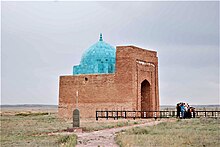



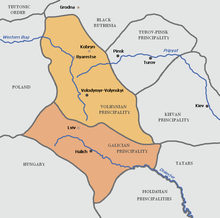
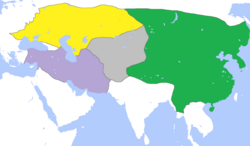

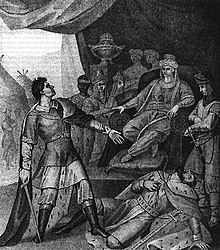


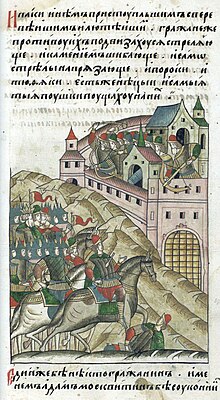


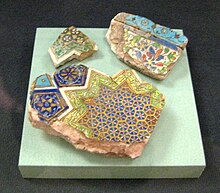



















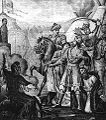
Comments
Post a Comment